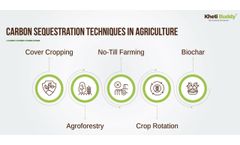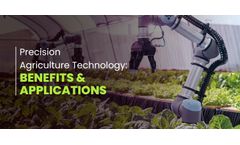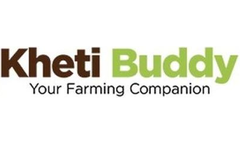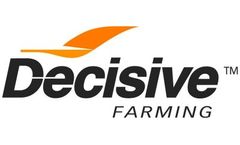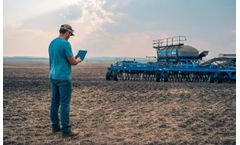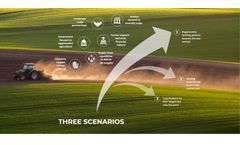Refine by
Agronomists Articles & Analysis
256 articles found
From climate change and disease, to declining production and uncertainties around tariffs and trade, the global orange juice sector is going through unprecedented upheaval, which will result in winners and losers for both growers and ...
Customers can enjoy 20% off all products and 5-10% off all services with limited time This holiday offer allows researchers, agronomists, and institutions to access Lifeasible’s cutting-edge technologies and services at a reduced cost, empowering them to pursue their scientific goals in 2025. ...
Renowned for its effectiveness and broad-spectrum activity, Pyroxasulfone is a vital tool for contemporary agronomists and farmers. Chemical Properties of Pyroxasulfone Pyroxasulfone is classified under the isoxazoline class of herbicides. ...
Renowned for its effectiveness and broad-spectrum activity, Pyroxasulfone is a vital tool for contemporary agronomists and farmers. Chemical Properties of Pyroxasulfone Pyroxasulfone (CAS 447399-55-5) is classified under the isoxazoline class of herbicides. ...
The project has as its overall aim to increase climate resilient agricultural productivity and food security, with a specific objective to increase the water productivity and profitability of smallholder farmers in Mozambique, prioritizing small (family sector) farmers to increase food and nutritional security. This project will demonstrate what the best combinations are of adoption strategies ...
The ThirdEye project supports farmers in Mozambique and Kenya with their decision making in farm and crop management by setting up a network of flying sensors operators. Our innovation is a major transformation in farmers’ decision making regarding the application of limited resources such as water, seeds, fertilizer and labor. Instead of relying on common-sense management, farmers are now ...
This process not only helps mitigate climate change but also enhances soil health, increases agricultural productivity, and promotes biodiversity. By sequestering carbon, agronomists can improve soil structure, enhance water retention, and reduce the need for chemical fertilizers, contributing to more sustainable farming ...
By leveraging data analytics, GPS, IoT, and various sensors, precision agriculture enables agronomists to make informed decisions, thereby enhancing crop yield and resource efficiency. ...
One of India’s leading crop protection companies has harnessed the power of remote sensing technology to enhance its interactions with farmers. By offering valuable insights into crop management, covering aspects such as nutrition, irrigation, and pest and disease control. The company has improved the efficacy of crop protection strategies and strengthened its relationships with the farming ...
Fruit picking, a labor-intensive and time-sensitive task, presents unique challenges that have troubled farms and agribusinesses for a long time. However, the emergence of smart harvest scheduling promises to transform this age-old practice. By using advanced technologies, smart harvest scheduling offers a more efficient, cost-effective, and sustainable approach to fruit ...
The concept of crop rotation dates back thousands of years, with ancient civilizations such as the Mesopotamians and Egyptians employing rudimentary forms of rotation to sustain their agricultural endeavors. The basic principle behind crop rotation is alternating the types of crops grown in a particular field over time to improve soil fertility, control pests, and maximize yields. In traditional ...
In the challenging and ever-evolving world of agriculture, where unpredictability reigns and efficiency is paramount, Dowd Hill Farms stands as a testament to the power of innovation and strategic partnerships. Nestled in the expansive landscapes of Dodsland, Saskatchewan, this family-run operation has embraced cutting-edge agricultural technologies to transform its farming practices. The case ...
Brad McDougald’s 2,500-acre farm in Drumheller, Alta., experienced a challenging season with a dry spell leading to reduced yields. Yet, through strategic soil health management and the adoption of high-tech solutions from Decisive Farming by TELUS Agriculture, McDougald’s farm outperformed expectations, cementing his commitment to innovative farming practices for sustainable future ...
Heritage Farms, led by manager Allan Smirl for over a decade, has continuously sought innovative ways to improve their operations. In 2014, the farm began a partnership with Decisive Farming to enhance decision-making processes impacting the farm’s ...
The success of the OCP Kenya-OCP School Lab (OSL) project stems from a comprehensive approach to addressing agricultural challenges in Kenya. A review of various surveys on the state of agriculture revealed a connection between low crop yields, reduced incomes, and soil fertility constraints, particularly soil acidity. Additionally, a lack of awareness about soil health and fertility ...
Avoid excess crop nutrients in your fertilizer strategy to maintain soil health and protect your pocketbook The push to produce higher yields per acre every year continues to weigh heavily on western Canadian farmers. That pressure is accompanied by economic and environmental concerns. Should you invest more money into crop nutrients to reach record yields? Will that investment pay off? Will ...
Identify and correct crop nutrient deficiencies in your soil to increase yield and profit Achieving prosperity in Canadian agriculture is a balancing act. While new technologies increasingly grow your potential to overcome limiting factors and boost yields, oftentimes revisiting the basics will further support your efforts to reach an optimum balance in soil nutrients. A great place to start is ...
Placing fertilizer within the seed row has been long-standing practice for many farmers across the prairies. Having those nutrients close to the seed makes it easily accessible by the plant, and can help the crop out of the ground and into the sun. Potash fertilizers and other nutrients, such as phosphate, are immobile fertilizers, meaning they don’t travel more than a half-inch through ...
When it comes to applying seed-placed fertilizer, it is important to find the suitable application rate for each specific soil type and composition. But it is also important to understand that seeding equipment and technology is a factor, and may impact growers’ fertilizer rates. The seed-safe rate for fertilizers relies on numerous factors. Crop choice, soil composition, pH levels, ...
What does the future hold? What are the most important enabling conditions for the scaling of regenerative agriculture so that companies hit their 2030 targets and regenerative agriculture becomes ...





